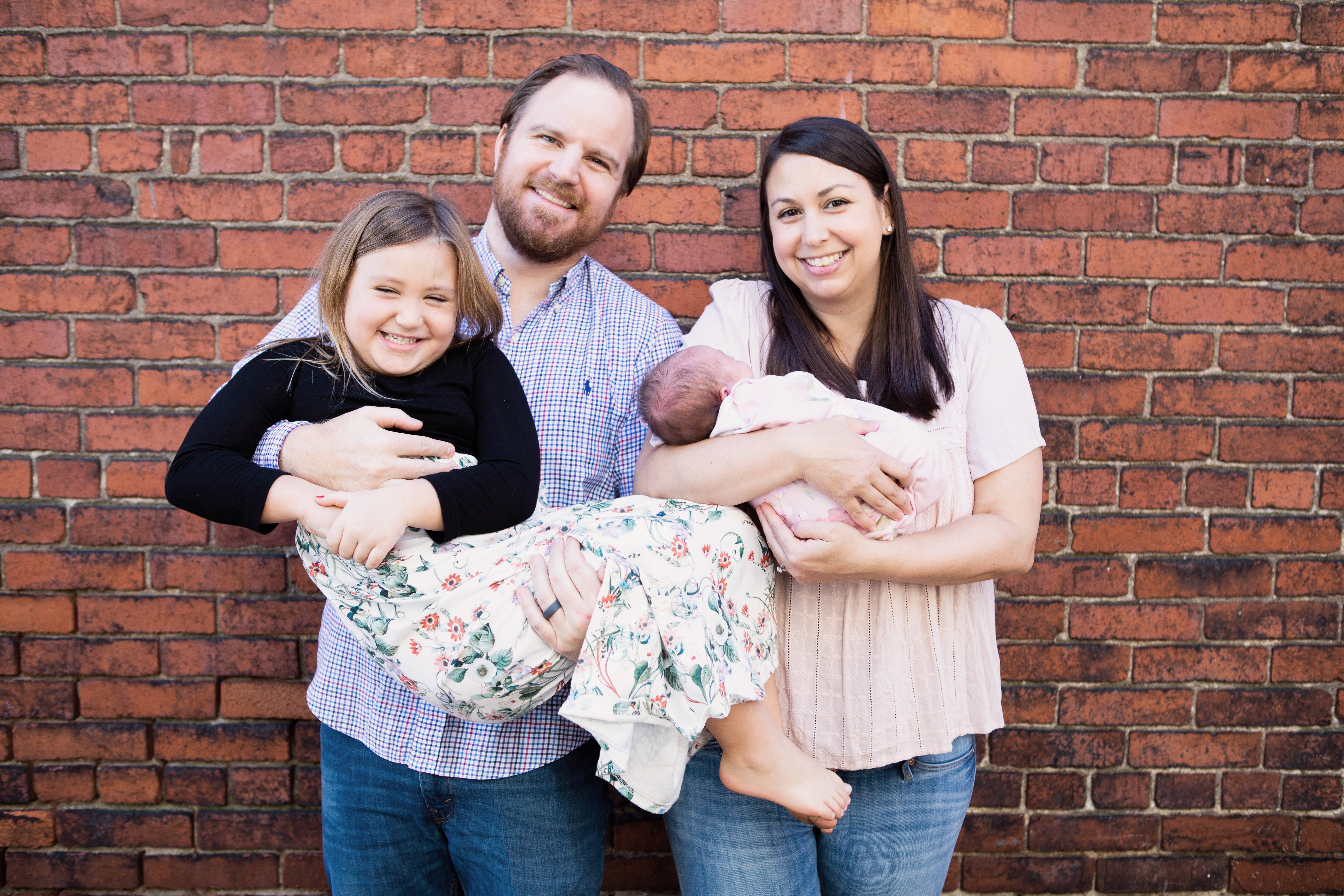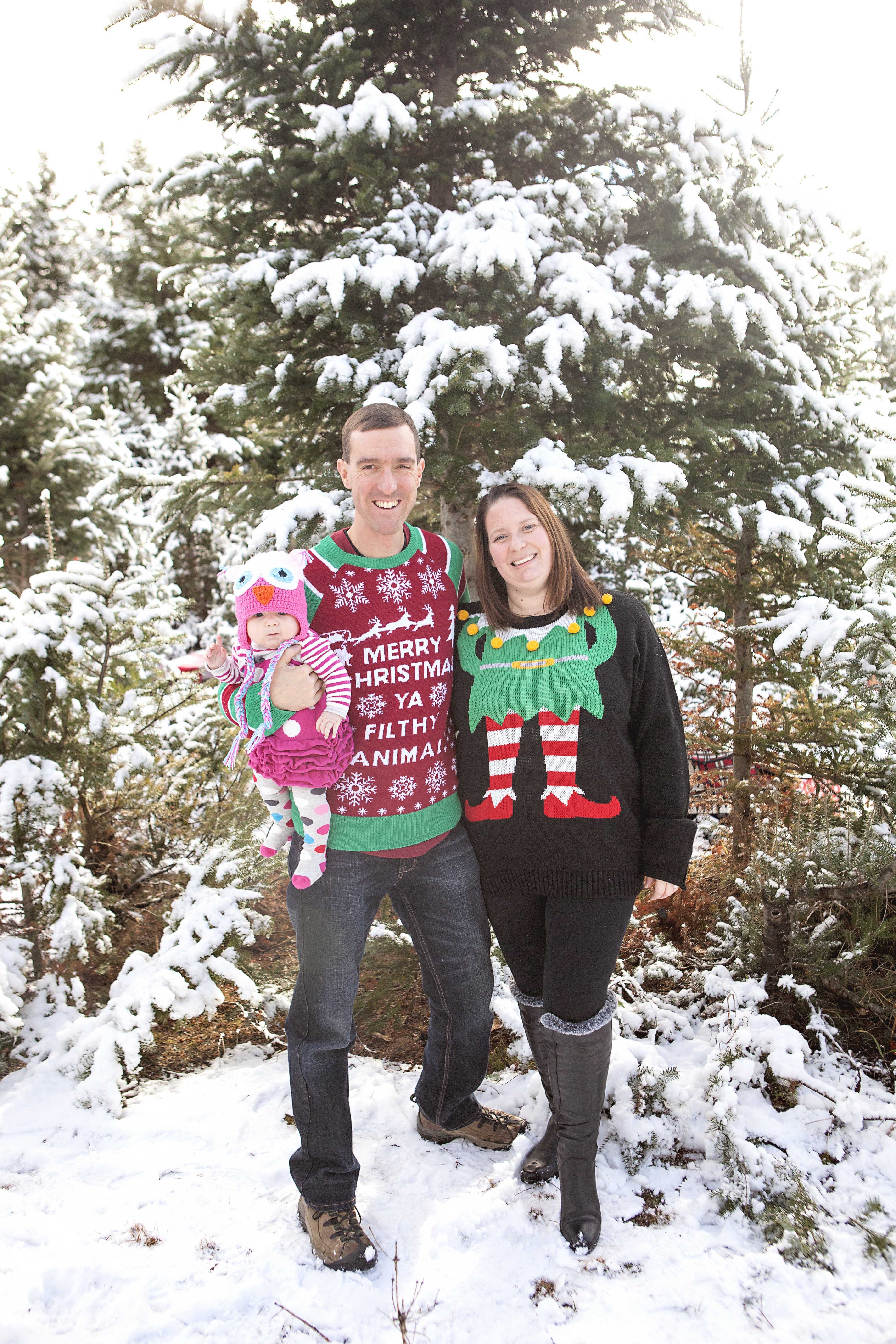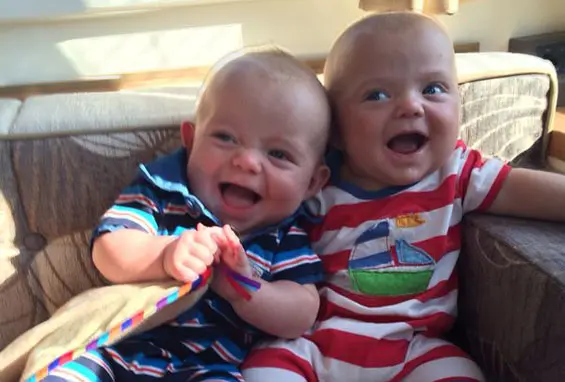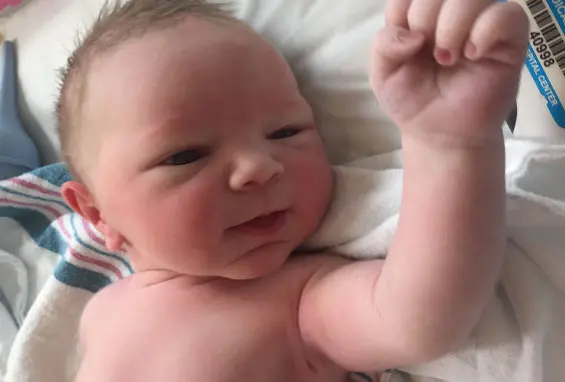Home / Patient Story / Holly & Jeff

Patient Story
Holly & Jeff
Premature Ovarian Failure
Robert J. Stillman, M.D.
Rockville, Maryland
Canada
Donor Egg
I was diagnosed with Granulomatosis with polyangiitis (GPA, also known as Wegener’s) in my early 20s. In my particular case, this rare vasculitis caused me to have subglottic stenosis – a web kept repeatedly growing across my throat below my vocal cords. After multiple throat surgeries, doctors determined that the best course of treatment was the chemotherapeutic drug cyclophosphamide (Cytoxan) to suppress my immune system.
I was informed that I had a 50% chance of going through premature ovarian failure (menopause) as a result of the treatment. However, the alternative was highly invasive reconstructive throat surgery. Freezing my eggs was not an option as this was more than a decade ago. However, I was put on the birth control pill in an attempt to protect my ovaries.
After chemotherapy, I decided that I wanted to have some adventures while I was healthy, so I left Canada and spent some time traveling around the world. I eventually stopped in London, England, to pursue further studies and then to work.
I met my husband about two years after arriving in England. Although we really hit it off, we both kept saying that we weren’t ready to settle down. I was still planning on moving back to Canada, and he was in the middle of his studies. It wasn’t until five years later that we finally got married!
A rude awakening
After chemotherapy, I had continued to take birth control pills. I had regular periods, so I assumed that my ovaries were okay after all. However, shortly before meeting my husband, I took myself off the pill to see what would happen.
My periods stopped. My rheumatologist tested my hormone levels. He was away when I received the results, and a very insensitive intern read the results and said to me, “Well, you do know that you’re in menopause, right?” I was very unprepared for how much that statement would hurt. That moment was the worst part of my infertility journey. Shortly after that, I saw a specialist gynecologist and was diagnosed with premature ovarian failure.
This all happened at exactly the same time that I met my husband. It was a difficult thing to talk about at the beginning of a relationship, but I didn’t think that I could hide it from him. He’s naturally a very understanding and positive person, so he took it all in stride.
I learned about egg donation a couple of years after my diagnosis, but at that point, we still weren’t married and so we didn’t seriously pursue it. We had talked about adoption, particularly international adoption since his family is from South Asia.
It wasn’t until we were married that I sat back and thought, actually, I really wish that I was able to have children with him. It might sound strange now, but I actually had a moment standing in our bedroom when I looked at him and thought, I really would love to have his child. It was a very emotional moment, and it made me realize that I probably hadn’t worked through all of my grief about infertility.
I talked to my gynecologist about it and she referred me to a wonderful counselor. My husband even attended a couple of sessions and I would strongly recommend it to anyone embarking on their infertility journey.
Understanding all of our options
By this time, we had decided to relocate to Canada. We explored adoption and egg donation in England, but because of our plans, we weren’t able to commit to either process. However, we did decide that we had some reservations about the international adoption process, and we really wanted to try to have a baby.
When we moved to Canada, I saw my rheumatologist and she referred me to a reproductive endocrinologist. He performed a battery of tests and confirmed that the only way I could conceive would be using donor egg treatment. Since we did not have a known donor, our only option was to use an unidentified donor. He suggested a few different clinics.
Although some were closer, he told us that Shady Grove Fertility was the best, and he recommended making the effort to travel there. So we bypassed all of the normal steps in fertility treatment and dove straight into the deep end with egg donation and, following his recommendation, we figured if we were going to give it a try, we might as well go with the best.
Traveling for the best care
We had our first visit to Shady Grove Fertility; to reduce our travel time, everything was packed into one day. It was exhausting but very comprehensive. We were very pleased with the personal attention that we received from Dr. Stillman and his team, and we particularly liked the fact that they understood our circumstances, living in Canada, and made a real effort to ensure that the program would meet our needs. Our one concern was the financial aspect of treatment. Shady Grove Fertility’s Shared Donor and Shared Risk programs certainly helped us to be able to manage the cost of treatment.
Once we got home, we confirmed that we wanted to enter the program, and we proceeded to select our donor. As soon as we saw her, we knew she was “the one.” We were really thrilled with her profile. Then came the ups and downs of waiting to see if we would get enough eggs because we did the Shared Donor program.
On my next visit to Shady Grove Fertility, I had my first embryo transfer which sadly didn’t take. That failure was my first experience with a serious disappointment in fertility treatment. We were very upset, but we had two frozen embryos left over so we decided to push forward with another round of treatment. After consultation with Dr. Stillman, we opted to transfer both embryos in order to maximize our chances of pregnancy. This time, one embryo successfully took. We were ecstatic!
I am now 25 weeks pregnant and the pregnancy is going smoothly. We are still probably a little more paranoid than most pregnant couples – I am very aware of every movement, and I still get nervous before every scan, but we are now well into the “normal” part of pregnancy where we are being treated just like everyone else. Well, almost like everyone else, since I do receive a bit of extra attention because of my vasculitis. I am just trying to enjoy every moment of pregnancy as it is such a precious gift.
My husband works in the medical field in a small community, so he has a lot more experience with prenatal check-ups, deliveries, and newborns than I do. In a way, I think his job made the first cycle’s failure much more difficult for him because he had to go to work and be around pregnant women and little babies.
However, now that I am expecting, he spends every evening with his hand on my belly, waiting to feel the kicks, and he talks endlessly about what stage we are at, what to expect next, and what will happen during labor. He has been incredibly reassuring. However, he also knows all of the delivery room staff, and he told me that they are all vying to work the shift when I give birth, so while he is completely prepared for the delivery, I am still quite nervous!
It might sound strange after all we have been through, but I still have to pinch myself to believe that I am pregnant, even with my beautiful bump under my maternity clothes and the little bundle of joy kicking my insides.
My advice to a friend
Keep trying. Explore your options. Ask as many questions as possible. Don’t give up hope. Seek help as early in the process as possible. Go into the whole process with an open mind, and don’t be judgmental of other people.
Everyone makes their own choices and just make sure you make the choices that are right for you and your partner. Try to stay positive and surround yourself with positive people, whether they are family, friends, or a support group.
And whatever the outcome, remember that you and your partner are on this journey together. Be kind to each other, remember why you are on this journey, and don’t ever forget to show your love for each other. And when a doctor recommends that you go to a clinic because it’s the best, take their advice!
Need-to-know fertility resources and guidance
Diagnosis and treatment
We understand you may have questions about infertility and how it’s treated. Gain answers from the diagnosis and treatments shared in this story.
Infertility terms
Donor egg treatment
Premature ovarian failure
Receiving care
Assemble your fertility care team close to home. Explore our different locations and physicians who will provide guidance along your journey.
Dr. Robert Stillman
Rockville, Maryland location
Find a location near me
Related Stories
Patient Story
Brittney & Rob
Patient Story
Cindy & Andrew
Patient Story
Catherine & Gavin
Patient Story
Deb & Julie
2025 Shady Grove Fertility




